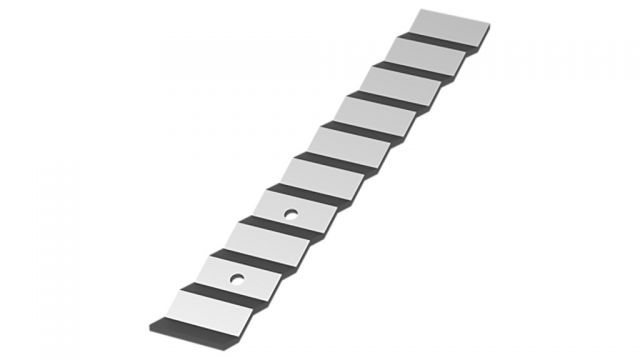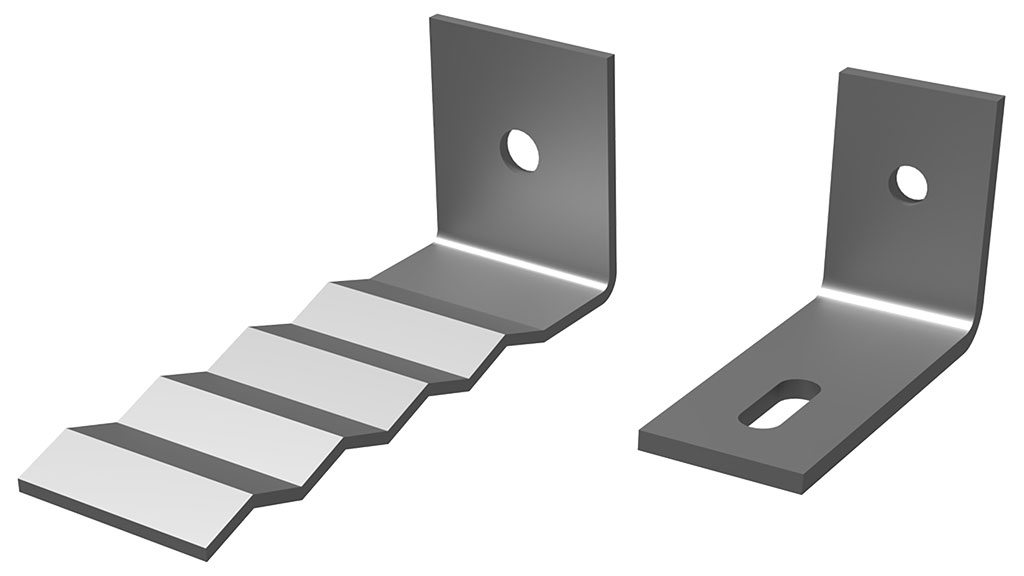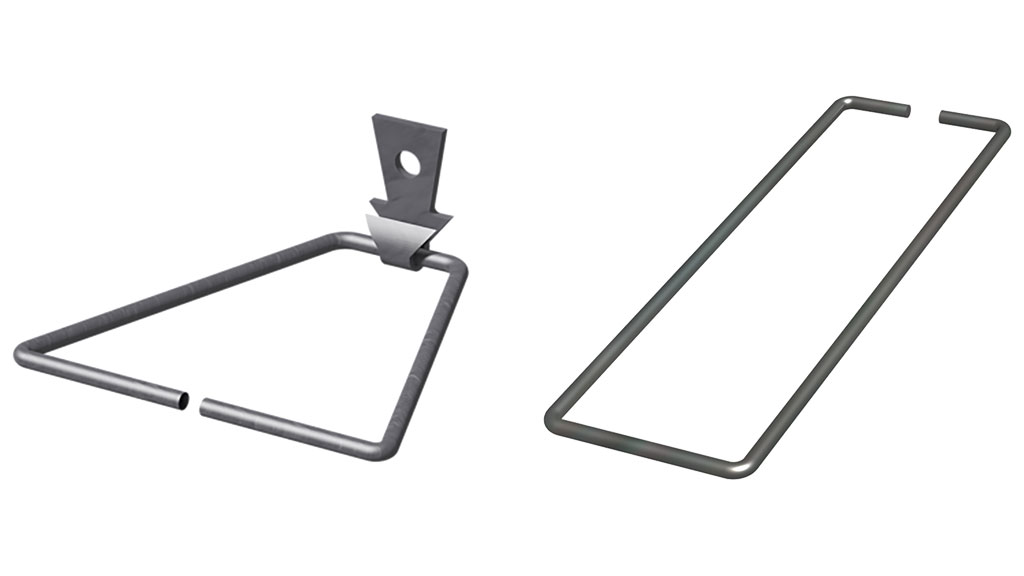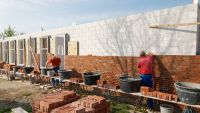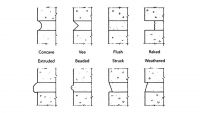Corrugated sheet metal anchors
December 14, 2016 5:00 PM CST
If the exterior wall does add to the wall strength by resisting out-of-plane loads, then the wall is either a multi-wythe, non-composite or composite wall.
Category D: In addition to the category C requirements, reduce the maximum wall area supported by each anchor by 75%. Wood backups require a corrosion-resistant 8d ring-shank nail or a screw 0.19 in. minimum in diameter or a fastener with equal or greater pullout.
Categories E and F: In addition to the Category C and D requirements, support each story of the building independent of the other stories.
For more information on these and other anchor-related questions, contact Paul Curtis at paul@heckmannanchors.com.
Q&A: Brick Veneer Anchors
Connectors, anchors, and fasteners
By Paul Curtis
Chapter 12 of the TMS 402/ACI 530/ASCE 5 2013 Building Code requirements defines the prescriptive design methods for Anchored and Adhered Masonry Veneer. This code was accepted in 2015 by the International Building Code. Here are some common questions and answers regarding this code chapter.
When is a wall considered a veneer?
If the exterior wall doesn’t add to the strength of the backup in resisting out-of-plane loads, then the exterior wall is considered a veneer wall.If the exterior wall does add to the wall strength by resisting out-of-plane loads, then the wall is either a multi-wythe, non-composite or composite wall.
What about water penetration?
Water penetration through the exterior veneer is expected. Make sure the backup wall is designed to resist water. Sheathing must be water resistant or covered with a water-resistant membrane, and the veneer must include flashing and weep holes. The weeps must be a minimum of 3/16-in. diameter and be spaced a maximum of 33 in. on center.Under what conditions can I use the Prescriptive Requirements for Anchored Veneer?
- Velocity pressure 40 psf or under.
- Buildings with a preservative-treated wood foundation height not exceeding 18 ft.
- Wood backup framing 30 ft. or less, or 38 ft. or less at a gable.
- Cold-formed steel framing backup walls 30 ft. or less, or 38 ft. or less at a gable with veneer supported each story above the 30 ft. height.
- Interior veneers with wood backup weight of 40 psf or less.
- Exterior veneers with an installed weight of 40 psf or less and a 12-ft. maximum height supported by wood construction. (Horizontally spanning element deflection from dead and live loads cannot exceed 1/600 or 0.3 in.)
- Openings where anchored veneer is not self-supporting must have non-combustible lintels or supports attached to openings.
- Maximum distance of 4 1/2 in. between the inside face of the veneer and the outside face of the solid sheathing/framing.
Five types of anchors are listed in the Code. What are they and where can I use them?
1. Corrugated sheet metal anchors
These are the smaller/thinner, field-bendable anchors typically found in residential brick homes. Minimum requirements are 22 gauge (0.3 in.) x 7/8 in. wide. They can be used only with wood backup walls with a 1-in. airspace. Larger airspaces require the sheet metal anchors below. The corrugated sheet metal anchors are not allowed in CMU backup walls! The nail or fastener into backup must be within 1/2 in. of the 90° bend.2. Sheet metal anchors
These anchors are factory bent and must be a minimum of 7/8 in. wide and 16 gauge (0.06 in.). Sheet metal anchors can be used with wood backup. Note that sheet metal anchors can be corrugated, but they are not the same as the corrugated sheet metal anchors above. The difference is the thickness of 16 gauge instead of 22 gauge, as well as being factory-bent.3. Wire anchors
These must be a minimum of 9-gauge wire (0.148 in.) and must have the horizontal bends in the veneer bent a minimum of 2 in. Wire anchors can be used with masonry backups and wood backups.4. Joint reinforcement
Can be either ladder-type or pintle/eye-type and be a minimum of 9-gauge wire (0.148 in.). Wire ties will be spaced 16 in. on center. Used with CMU backup only.5. Adjustable anchors
Sheet metal components must be a minimum of 16 gauge (0.06 in.), and the wire portion a minimum of 9 gauge (0.148 in.). Maximum clearance between connecting parts is 1/16 in., and the maximum offset (above or below the plain of the backup anchor) is 1 1/4 in. Adjustable anchors are used with wood, steel framing, masonry and concrete backups.How often are the anchors spaced and how thick are the joints?
Spacing
Adjustable anchors, 9-gauge wire anchors and 22-gauge corrugated sheet metal anchors require one anchor for each 2.67 ft² of wall space. All other anchors are spaced one anchor each 3.5 ft². Maximum spacing is 32 in. horizontally and 25 in. vertically, not exceeding the maximum square foot area. Additional anchors are required around openings over 16 in. in either dimension. Anchors should be placed within 12 in. of the opening.Joint thickness
The mortar bed needs to be at least twice the thickness of the anchor (3/16-in. diameter anchor requires a 3/8-in. joint)What about seismic zones?
Category C: Isolate the sides and top of the veneer so the vertical and lateral seismic forces resisted by the structure are not transferred to the veneer.Category D: In addition to the category C requirements, reduce the maximum wall area supported by each anchor by 75%. Wood backups require a corrosion-resistant 8d ring-shank nail or a screw 0.19 in. minimum in diameter or a fastener with equal or greater pullout.
Categories E and F: In addition to the Category C and D requirements, support each story of the building independent of the other stories.
What do I do in high-wind areas?
For areas with velocity pressure over 40 psf not exceeding 55 psf and the roof height is 60 ft. or less, reduce the maximum wall area 70% and space anchors a maximum of 18 in. on center.What do I do if my building doesn’t fit into the Prescriptive Requirements or if there is a new product that doesn’t fit in any of the code requirements?
Section 1.3 of the code states that you have the right to present data on the new design to a board of examiners composed of licensed design professionals appointed by the building official. This board will investigate the data of the new system and formulate rules governing the design and construction to meet the intent of the Code.What about adhered veneer?
Adhered veneer walls must be designed and detailed to meet the water-resistant, flashing and weep hole conditions listed above for anchored veneers. There are no rational design provisions for adhered veneer in any code or standard. TMS 402 section 12.3 allows the designer to use alternative unit thicknesses and areas for adhered veneer.For more information on these and other anchor-related questions, contact Paul Curtis at paul@heckmannanchors.com.
About the Author
Paul Curtis is president and third-generation owner of Heckmann Building Products, Inc. Heckmann has been manufacturing masonry anchors and ties since 1923.











